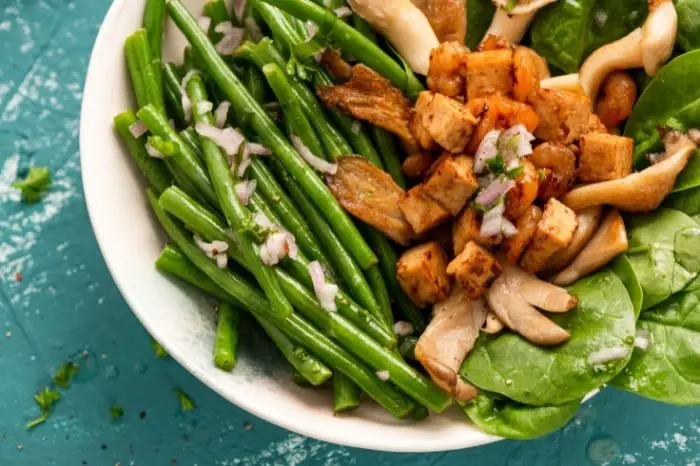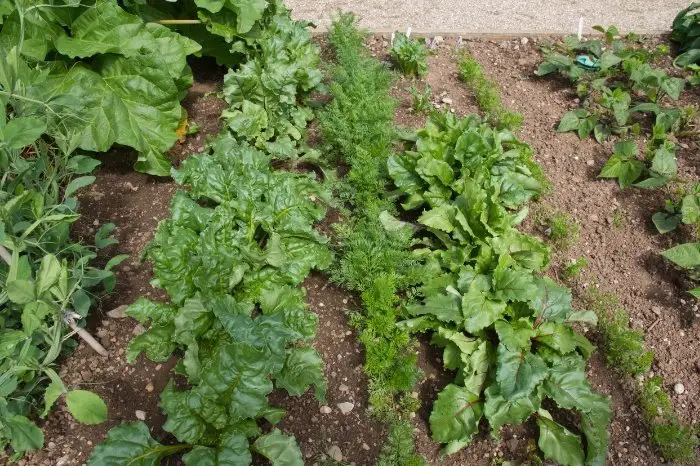Last Updated on January 29, 2022
The best string-less green beans to grow in your garden are the ones you like the most and the ones you enjoy, whether cooked or raw.
What are string-less green beans? String-less green beans are beans that don’t have strings, literally. String-less beans also tend to be smaller than other types of green bean pods. Sometimes, the whole pod is eaten instead of just the seeds inside. You can eat them raw or cooked.
Green beans are a trendy vegetable across America that most people love to enjoy fresh. Best of all, they’re easy to grow at home on a balcony, patio, or garden! Start growing green beans from seed or seedlings. You can use green bean seeds as starter plants too.
Why Eat Green Beans?
In addition to being delicious and string-less, green beans provide lots of nutrients and contain disease-fighting antioxidants that help reduce the risk for chronic diseases such as heart disease and cancer.

String-less green beans reduce prep time. If you’ve ever harvested a garden full of beans and then spent the next hour or two de-stringing them before cooking, you know what we’re talking about! You also don’t have to worry about eating the strings; they are edible and not tough at all.
What Are The Best String-Less Green Beans To Grow In Your Garden?
You can experiment with different variations of string-less green beans and see which ones you like the most! Here are some names of the string-less green beans that you can grow – Blue Lake, Contender, Jackpot II, and Kentucky Wonder, along with many more names! Green Beans can be eaten cooked or raw, depending on your preferences. Best of all, every part of the plant is edible – pods, seeds, and even flowers. If you let them bloom, they will provide lots of nectar for bees!
Best tasting green beans to grow should be an easy choice – eat the ones you like the most! Best tasting green beans to grow means that you will be able to eat the most delicious string-less beans. You can also grow many different beans in containers on your patio or porch.
String-less green beans are versatile and can be enjoyed raw, steamed, sautéed or stir-fried. Best string-less green beans may vary by preference and region because different regions favor certain varieties of string-less green bean plants over others. Best tasting green beans to grow will also depend on whether you like them raw or cooked.
What Is The Most Flavorful Green Beans?
So how do I know this is the best tasting green beans to grow? If you want to give your family something nutritious that they’ll eat right off their plates at dinner time, try growing some of the best string-less green beans to grow. Some of our favorites include Blue Lake, Jackpot II, Contender, Kentucky Wonder, and many more.
Best tasting green beans are all about preference! You may have to experiment with multiple best string-less bean types until you find one that’s the perfect match for your taste buds.
Best string-less green beans to grow can also depend on where you live. Each region has different types of varietals that are well suited for growing in that area.
Best tasting green bean plants will also vary by if they’re eaten raw or cooked. The best green bean plants should be tasty when enjoyed, whether raw or cooked. Some people prefer green beans that stay green, while others love them when they turn yellow or purple during cooking.
Green Bean Seeds – Kentucky Dreamer – Bush Type Stingless – (250 Seeds)
How To Grow String-Less Green Beans?
The best string-less bean plants can be grown in containers on your patio or in flowerpots, but they will need at least 6 hours of sun each day. Let’s learn what is crucial in growing your string-less beans.
- Start your Seeds Indoors. You can start green bean seeds indoors in peat pots before planting outdoors when temperatures reach 45 degrees Fahrenheit during the day and 40 degrees Fahrenheit at night.
- Spacing. Your string-less bean plants should be spaced about 18 inches apart within rows that are 36 inches apart for maximum production. You can thin your seedlings or transplant them to their ideal growing location once they reach a height of about 3 inches.
- Grow String-less Beans as Companion Plants. You can use the best string-less green beans as companion plants by growing them near lettuce, onions, and other vegetables known for repelling insects away from your garden.
- Soil. String-less beans will do well in fertile well-draining, moist soil conditions. Organic manure is an excellent choice to fertilize your soil and make it more productive.
- Watering. Water your string-less beans at least 1-inch of soil. Do not overwater them to avoid fungal root diseases.
- Support your Plants. You can support your string-less green beans with stakes if needed, so they don’t fall over during high winds or heavy rainstorms.

Conclusion
The best string-less green beans to grow are all about preference. The best-tasting green bean plants should be tasty when enjoyed raw or cooked.
Some people prefer green beans that stay green, while others love it all colorful – yellow or purple during cooking. And what’s more wonderful is you can grow your string-less beans in your patio, garden or a few containers.
FAQ’S
What are the best string-less runner beans to grow?
The best string-less runner beans to grow to include, Blue Lake String-less, Kentucky Wonder, Mr Big and many more. Best string-less runner beans are the top well-known varieties that are easy to grow and produce delicious string-less tasting beans.
What's the difference between green beans and runner beans?
Green beans and string-less green beans are both varieties of the common bean (Phaseolus vulgaris). String-less green beans grow on climbing plants known as "pole beans" while traditional green vegetable bean plants grow on bushes.

Lory is an avid gardener who loves spending time outdoors. She is passionate about using her green thumb to create beautiful, lush gardens for her friends and family. She finds joy in tending to her garden, trimming plants, and cultivating new species. She loves to share her knowledge and experience with others who have a similar enthusiasm for gardening. Lory is a true nature enthusiast who loves to share her enthusiasm for the outdoors with all who meet her.

